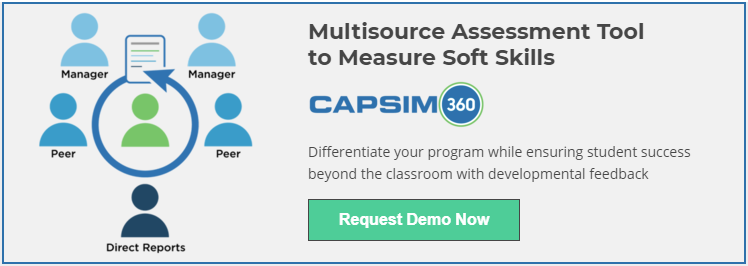8 Tips for Effective Developmental Feedback
January 17, 2018

Feedback is an important component of professional and personal development. It can reveal individual areas of strength to build upon and weakness in need of improvement. However, not all feedback is good feedback and not all can be used to encourage growth.
In regards to the thousands of 360-degree feedback interviews she’s conducted over the last decade, Jennifer Porter, Managing Partner of the leadership and team development firm The Boda Group, states that “More often than not, the feedback isn’t particularly useful.”
Strategic developmental feedback, or feedback that helps someone learn and improve, is composed of eight characteristics discussed below. Let’s take a look.
What Makes Up Strategic Developmental Feedback?
1. Big-Picture Focused
Feedback should answer the following question – “For this leader to be maximally effective, what should they do more of and less of?” Identifying current strengths and weaknesses increases accurate self-awareness and allows individuals to gain a strategic view of behaviors they can keep the same or change.
2. Organizationally Aligned
Feedback should avoid the giver’s personal beliefs or preferences. As Jennifer Porter states, “When a feedback giver says ‘She has a great sense of humor,’ what they are usually saying is ‘Her sense of humor matches mine so I enjoy it.’” Feedback should instead be based on organizational values and the organization’s definition of what effective leadership looks like.
3. Behavioral and Specific
Individuals receiving feedback need to know what they are actually accomplishing through their leadership behaviors. Vague descriptions like “inspiring,” “great,” or “lacking executive presence,” are useless without more clarity. What about them is inspiring? What about them is great? Being specific informs individuals of the impressions their behavior is having.
4. Factual, not Interpretive
Feedback should not be composed of adjectives that interpret the leader’s behavior. Terms like “self-centered” and “lacks confidence” are based on the giver’s interpretation and may not be completely accurate.
5. Both Positive and Negative
Providing a leader with both positive and negative feedback allows them to build on what they are doing well and improve on what they are doing less effectively. Jennifer Porter states, “Negative feedback serves as important fuel for other changes that are needed. And recognizing progress on meaningful work — which positive feedback highlights — is one of the best drivers of engagement, motivation, and innovation.”
6. Focused on Patterns
Feedback on patterns of behavior compensates for the bias where we place greater importance on events in our near-term memory. Instead of looking at leadership performance in a single recent meeting, looking at behavioral patterns on a long-term scale allows individuals to correctly recognize their leadership behaviors.
7. Linked to Impact
Feedback should allow individuals to pinpoint how certain leadership attributes impact their colleagues, direct reports, and supervisors. This allows individuals to prioritize certain behaviors if they are having a positive impact on others.
8. Prioritized
Jennifer Porter shares that adults can only effectively focus on and work on a few concepts at a time. Giving individuals an extensive list of developmental needs with the expectation of them addressing every single item is only setting them up for failure.
Feedback People Can Actually Use
Capsim360 is a multisource assessment that allows individuals to measure the soft skills needed to ensure sustained professional success. This tool measures the nine key managerial skills most cited in research. These skills are:
- Administrative
- Communication
- Leadership
- Technical
- Service
- Interpersonal
- Ethical
- Citizenship
- Motivational
Capsim360 follows certain aspects of the eight characteristics mentioned above to provide reliable and valid strategic developmental feedback. Let’s take a look at how Capsim360 provides feedback people can actually use for professional development.
1. Big-Picture Focused
Capsim360 provides skill-level feedback that allows participants to quickly identify weaknesses, or areas most in need of continued development. In addition, item-level feedback dives deeper into the results and pinpoints specific strengths and weaknesses.
2. Organizationally Aligned
This tool eliminates the personal beliefs or preferences of the participant’s managers, peers, and direct reports by incorporating 48 behavioral questions and open-ended questions that have been field tested on more than 2,000 individuals and 16,000 responses.
3. Behavioral and Specific
The 48 behavioral questions and open-ended questions result in actionable and direct feedback that eliminate vague descriptions like ”inspiring” or “great.”
4. Factual, Not Interpretative
Capsim360 eliminates respondents’ personal interpretation of a participant’s skill level and accurately ties their answers back to the participant’s skill competency in the nine measured soft skills. The results are factually backed by extensive research on managerial and leadership effectiveness.
5. Both Positive and Negative
Capsim360 is composed of both the negative (weaknesses) feedback needed to fuel meaningful change and the positive (strengths) feedback needed to drive engagement, motivation and innovation. Capsim360 provides feedback that allows participants to create personal development plans so they can take ownership of their self-development and consequent career progression.
6. Focused on Patterns
By incorporating the 48 behavioral questions and open-ended questions into the respondent’s survey, this tool avoids recalling and over-weighting events in their near-term memory.
7. Linked to Impact
Capsim360 captures workplace data from participants in order to allow them to directly recognize how their managerial and leadership effectiveness is impacting their managers, peers, and direct reports. This allows participants to prioritize and continue demonstrating behaviors that are positively impacting others.
8. Prioritized
Instead of working on a generalized list of important managerial and leadership skills, Capsim360 focuses on the nine key soft skills most cited in research. This allows participants to prioritize their development without being set up for failure.
Strategic developmental feedback and meaningful soft skill assessment can be obtained with Capsim360. Consider incorporating this tool into your program to allow your students, and future business leaders, to take ownership of their self-development.
To learn more about Capsim360 and how this multisource feedback tool can fulfill the developmental needs of your students while helping you obtain the data required for accreditation documentation, access your complimentary eBook – Hard Measures for ‘Soft Skill’ Learning Goals.



.png?width=80&name=1-questions%20(1).png)